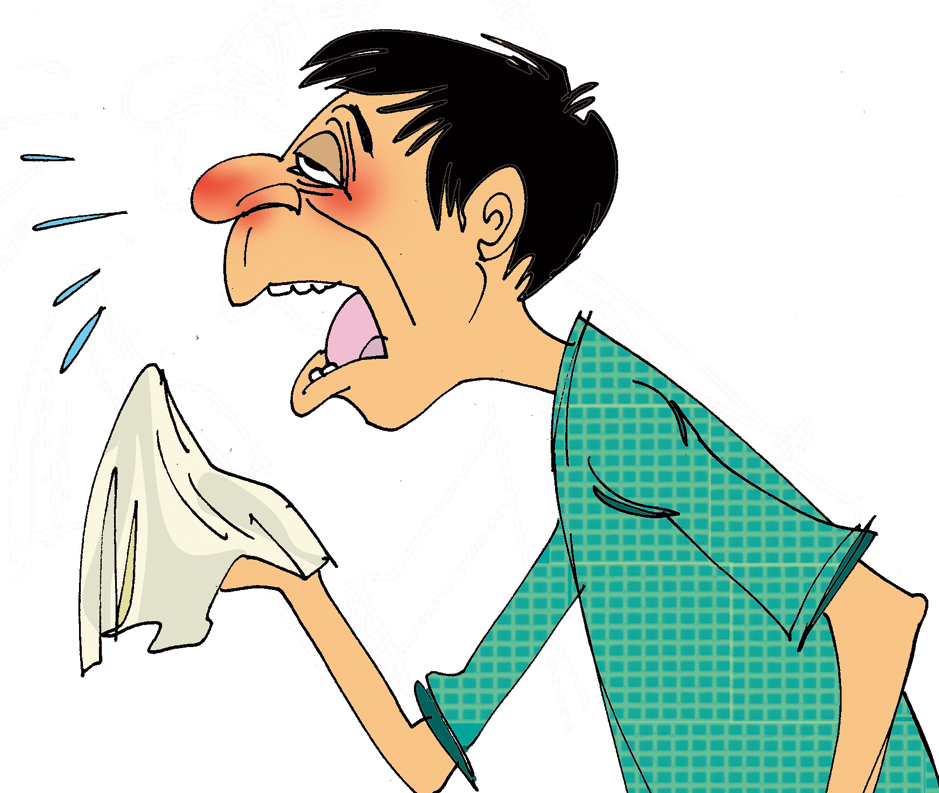The weather has changed. A chill wind has started blowing and with it has arrived the “cold and flu” season. This is the time when many people begin to sniffle, have leaky noses and develop a cough. There may be high or low-grade fever, depending on whether it is just a cold or the flu. Although everyone is susceptible, symptoms are likely to be severe in young children and the elderly. They are also more likely to develop a secondary bacterial infection and other complications.
More than a hundred viruses can cause what we call the common cold. Sometimes, two viruses cause a “cold” at the same time, increasing its severity. After initial air-borne or physical contact with an infected person, there is an asymptomatic incubation period of a day followed by 5-7 days of misery — fever, headache, a leaky nose, sneezing and coughing. The temperature is low grade (less than 100°F) and the discharge from the nose is clear and watery. Symptoms usually subside by themselves. The person remains infectious for about 10 days after the symptoms subside, explaining why colds spread so rapidly.
Symptomatic relief from fever and body pains can be obtained with paracetamol (500 mg every 6-8 hours for adults, 10-15mg/kg/dose for children). Remember, your hand is not a thermometer. Always check temperature with a thermometer. Only a temperature above 100°F should be considered fever.
Saline nose drops help to clear the nose. They need to be used every two hours and help flush out secretions. These drops are safer than chemical nasal decongestants, which can produce habituation (more frequent dosing for the same relief) and worse still, rebound congestion that may be worse than the original blockage. Steam inhalations also help the body rid itself of secretions.
Cough suppressants and menthol cough lozenges help with a hacking cough. Hot lime juice and tea with lemon and honey may also relieve the symptoms. Suppressants and honey should not be given to children under four years of age. The appetite may be poor because a blocked nose means you have lost your sense of smell, but it will improve with recovery.
Antibiotics will not make recovery faster. They work only against bacteria, not viruses. A course of antibiotics is usually five days, and a patient will usually spontaneously recover from a cold in that time.
Complications from a cold can occur primarily in children and the elderly. If the symptoms last more than 10 days, there is high fever (101°F or more), severe headache, cough or vomiting, complications may have set in. Ear infection, aggravation of asthma, bronchitis or pneumonia can also occur.
There are three types of influenza virus that cause the flu. Types A and B cause severe illness and outbreaks, while C causes minor disease. The symptoms are similar to that of the common cold but in a more severe form. Complications can set in, especially in children under two years, adults over 65 years, those with asthma, diabetes, liver or kidney disease and cancer survivors. Respiratory complications may be severe enough to require hospital admission.
The best way to prevent flu is with immunisation. Annual boosters are required as the virus mutates every year. Antiviral medications reduce the duration and severity of the flu if taken within 48 hours of the attack.
If you are sick, it is better to stay away from school and the workplace. Both cold and flu viruses spread rapidly by sneezing and coughing. Once they are deposited on furniture, walls and other such surfaces, they can survive for 24 hours. Touching these contaminated surfaces and then your nose, transfers these organisms to the respiratory tract. Wash your hands frequently to prevent this. Regular exercise boosts immunity. The infection is likely to be less severe, last for a shorter duration and not produce complications in fit people.
The writer is a paediatrician with a family practice at Vellore and author of Staying Healthy in Modern India.











